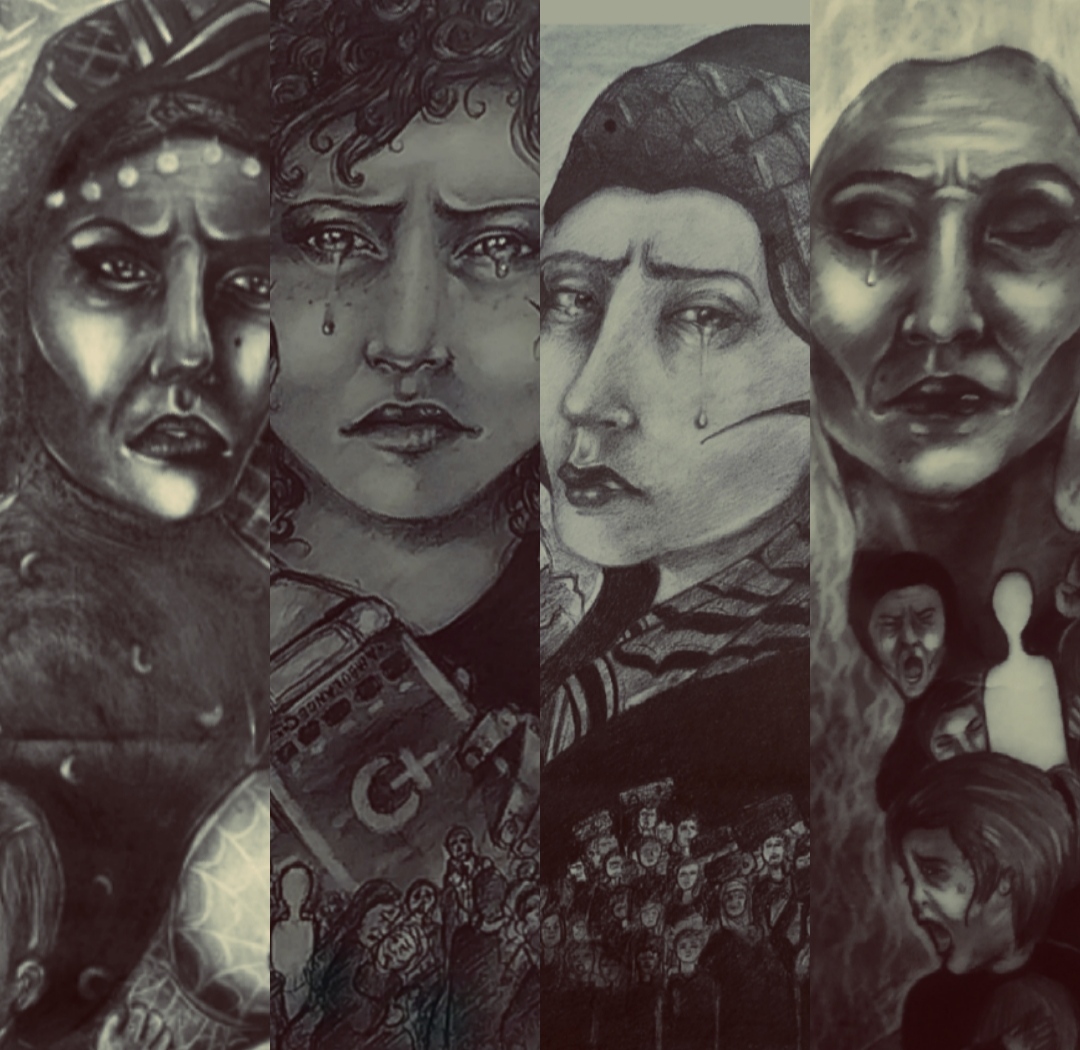Harvest
Ahmed Adnan
Born 1997, in Nuseirat, Gaza
Displaced in Nuseirat

© Adnan Ahmed. Courtesy of the artist.
In his project Harvest, artist Ahmed Adnan presents a body of work that explores the events of the war in Gaza from its cultural, historical, and social dimensions. The work focuses on the darkest moments and the extent of suffering experienced by the people of Gaza, depicting the profound impact of these events on the reality of the strip and its inhabitants. By tracing the events and situations during the war and their aftermaths, Adnan highlights the experience of Gaza’s residents under genocide.
Ahmed Adnan’s exhibition, Harvest, presents a collection of works describing events of the war in Gaza from cultural, historical, and social perspectives. It traces the impact of these events on the local community. Harvest focuses on the stark details and immense suffering endured by the people of Gaza through a cohesive representational style. Adnan believes visual art can shed light on the events that have affected life in Gaza so drastically. His work is a form of deep reflection on the events and experiences of genocide and their implications.
A key work of the exhibition is a ‘re-telling’ of Vermeer’s Girl With a Pearl Earring which hangs in the Hague. This work asks the ultimate question of art and beauty: what beauty can survive the total denial of humanity. The subject of Vermeer’s aforementioned work loses all value if humanity is considered disposable. Her portrait stands as a pinnacle of Western art, claiming an aesthetic power at the height of human achievement. And it is no doubt for this reason that she found her home in The Hague, the custodian of Western values. In Adnan’s Pearl of Departure, the ghost of Vermeer’s Girl haunts a young woman subjected to a brutal injustice because she is Palestinian and from Gaza. Whether Pearl of Departure will be presented in or near the Hague is yet to be determined, but it seems that Vermeer’s Girl is meaningless without her.
Fiery Plea (استغاثة نارية)
A woman is praying with a distorted face, pleading not to die amidst the burning rubble. They lie on the gravel, cooling the heat of their exhausted bodies with the blood of children, while their prayers and collective anguish extinguish the fire rising to the sky, escaping toward a fated end on their sacred land.
Pearl of Departure (لؤلؤة الرحيل)
No time for farewell and longing; a cloud that knows no departure. Peace be upon us when we leave forcibly and are betrayed treacherously, and peace be upon us in death as we return. This artwork captures the poignant essence of forced separation, and the deep sense of longing that accompanies it. It reflects on the theme of departure, where the cloud symbolizes the heaviness of loss, highlighting the painful reality of leaving without a choice. The phrase “Peace be upon us as we leave forcibly and are treacherously killed” encapsulates the struggle and resilience of those affected by conflict, while also hinting at the hope of return despite the surrounding despair.
It is Not Enough, It Does Not Fit (انه ال يتسع إنه لا يتسع)
This artwork captures the overwhelming feeling of confinement and despair experienced in times of crisis. It reflects the constant waiting for relief and the anxiety of not knowing when help will arrive. The imagery evokes a sense of collective suffering, emphasizing the shared experience of loss and the inevitability of mortality in such circumstances. The poignant question, “How long must we wait for mercy?” resonates deeply, encapsulating the urgency felt by those trapped in conflict.
There is no space for me or for them. We wait for the mercy cart. Hasn’t it arrived yet, or is there still much more to come? How long, how long must we endure death together and declare its arrival?
Guest on My Mother’s Chest (ضيف على صدر امي)
This piece explores the intimate and vulnerable relationship between a mother and her child in the context of trauma and loss. It symbolizes the warmth and protection a mother provides, juxtaposed with the harsh realities of conflict and displacement. The imagery conveys a deep sense of longing and the innocence of childhood amidst chaos, illustrating how the bond between mother and child serves as a refuge during times of turmoil.
Ahmed Adnan has worked as a course trainer at the Al-Marsam Al-Hurr Foundation for over two years under the supervision of Professor Fares Iass. He has three years of extensive experience in digital character design and has participated in numerous local and international exhibitions and art workshops. This includes the TVT international exhibition, the cartoon sculpture workshop at Dar Al-Kalima with Professor Mohammed Al-Hajj in 2022, and a sculpture workshop with Professor Rana Al-Batrawi in the same year. He won second place in the best digital character design competition at Ain Shams University in 2018 and achieved first place for designing the university logo at Palestine Technical University in the same year. In 2018, he also organized a solo exhibition commemorating Land Day at Al-Azhar University and the Islamic University in Gaza. Ahmed has a strong interest in surrealism and expressionism.
